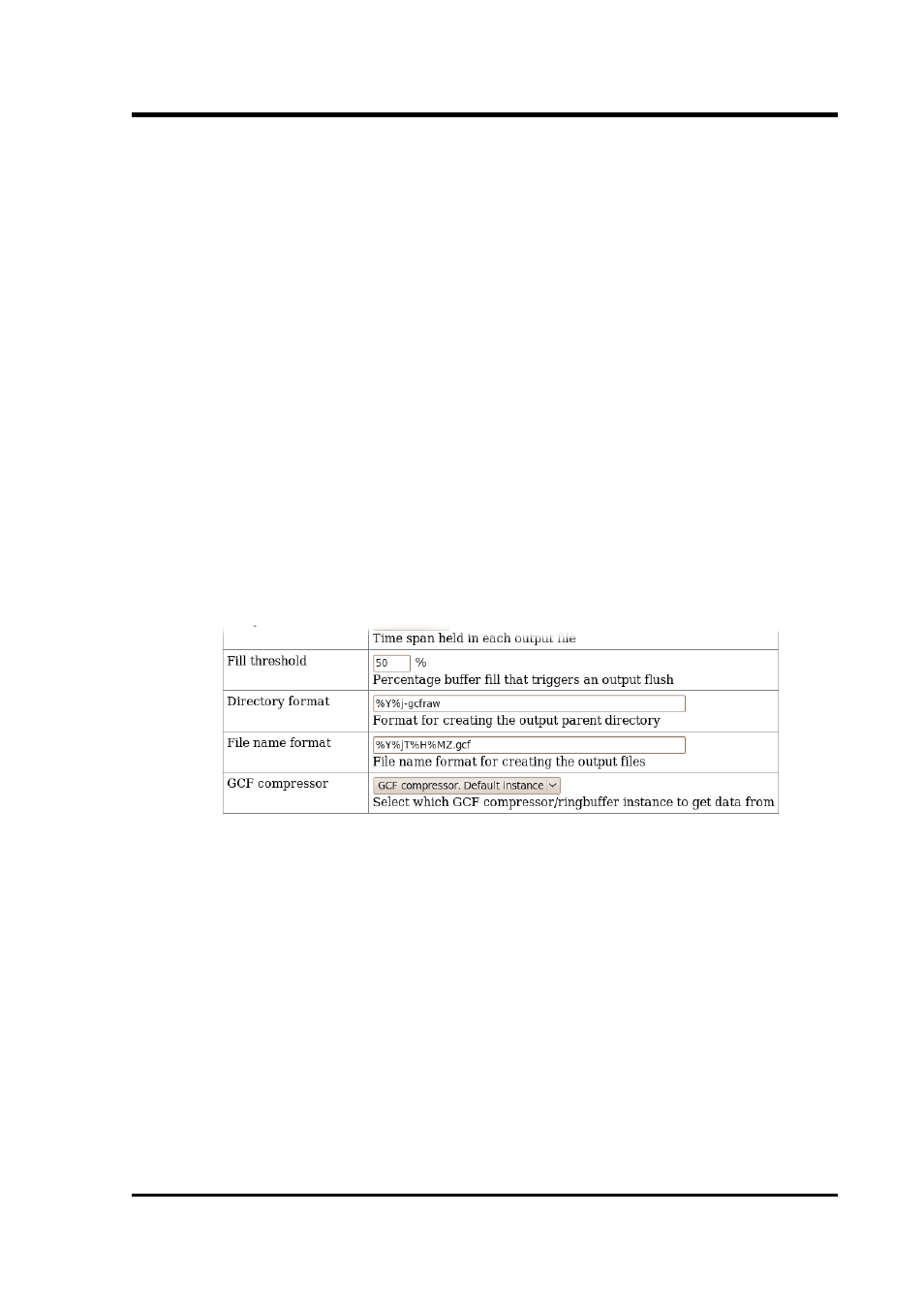Guralp Systems CMG-DCM build <10,000 User Manual
Page 113

Operator's Guide
If rdisk is not used, the Output directory text field must be populated
with a pathname to the desired storage directory. If a directory name
is given here and rdisk is used, the directory named must be the same
as or a subdirectory of the directory managed by rdisk.
It is sometimes desirable to synchronise the flushing of memory to
disk with an external application. This can be achieved with the use
of a semaphore file: the external application writes the file when it is
ready to receive data and can remove it in order to inhibit flushing. To
activate this feature, enter the desired semaphore file into the Check
file text field. The same technique can be used to detect the mount
status of removable hardware.
An arbitrary command can be run immediately prior to flushing the
memory to disk. This is typically used for mounting external storage
devices on, say, a CMG-NAM but could also be used for synchronising
operations with an external application. If you require to use such a
command, specify it in the Mount command text field.
The Unmount command text field fulfils a similar function but is run
immediately after flushing.
The second set of expert options, shown above apply only to GCF
recording.
The Fill threshold text field allows control over the percentage
utilisation of the buffer memory which triggers a flush to disk. The
default is fifty percent.
The Directory format text field can be used to control the base
directory under which all GCF files are stored. It can be populated
with a constant path name component or it can include escape
sequences to include variable data such as the stream name: these are
described in section 10.2.3 on page 115.
November 2010
113
